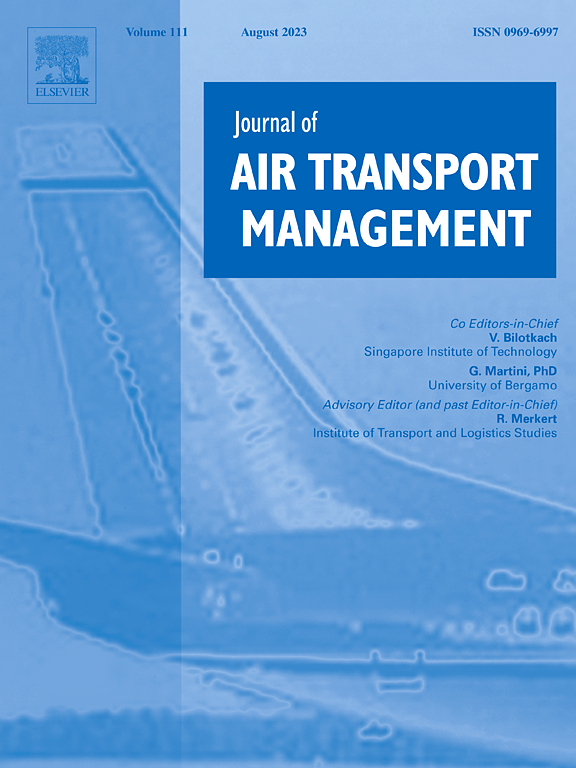不同客舱人群疏散场景的多力地板场模型仿真
IF 3.6
2区 工程技术
Q2 TRANSPORTATION
引用次数: 0
摘要
飞机客舱疏散过程中乘客的行为具有复杂性和可变性。为了研究特定社会地位乘客群体的组合、回溯和跟随行为,以及残疾人群体在辅助人员协助下使用轮椅的疏散行为,采用多力层场元胞自动机模型评估群体行为对疏散效率的影响。该模型解释了不同规模和残疾人群在疏散行为上的逻辑差异。通过仿真,分析残障人群加入疏散过程的时机对不同客舱段疏散时间和效率的影响。更重要的是,我们研究了疏散过程中不同规模群体的空间分布。结果表明,残障群体的早期融入对整体影响较小,而其延迟参与则加剧了退出使用时间的不平衡。群体的存在延长了总疏散时间,与更大的群体相比,成对的空间结构更密集。群体带来的负面影响随着群体规模的增大而增大。本文章由计算机程序翻译,如有差异,请以英文原文为准。
Multi-forces floor field model simulation of cabin evacuation scenarios for various passenger groups
The behavior of passengers during aircraft cabin evacuations is characterized by its complexity and variability. To investigate the combination, backtracking, and following behaviors of passenger groups with specific social statuses, as well as the evacuation behavior of disabled groups using wheelchairs with the assistance of auxiliary personnel, we assess the influence of group behavior on evacuation efficiency employing the multi-forces floor field cellular automaton model. This model accounts for the logical differences in evacuation behaviors between different-sized and disabled groups. Through simulation, we analyze the effect of the timing of disabled groups joining the evacuation process on the evacuation duration and efficiency of different cabin segments. What is more, we examine the spatial distribution of groups of various sizes during the evacuation process. The results indicate that the early integration of disabled groups has a minimal overall impact, while their delayed involvement exacerbates the imbalance in exit usage time. The presence of groups prolongs the total evacuation time, with pairs exhibiting a denser spatial structure compared to larger groups. The negative impact brought by groups increases with the size of the group.
求助全文
通过发布文献求助,成功后即可免费获取论文全文。
去求助
来源期刊

Journal of Air Transport Management
TRANSPORTATION-
CiteScore
12.40
自引率
11.70%
发文量
97
期刊介绍:
The Journal of Air Transport Management (JATM) sets out to address, through high quality research articles and authoritative commentary, the major economic, management and policy issues facing the air transport industry today. It offers practitioners and academics an international and dynamic forum for analysis and discussion of these issues, linking research and practice and stimulating interaction between the two. The refereed papers in the journal cover all the major sectors of the industry (airlines, airports, air traffic management) as well as related areas such as tourism management and logistics. Papers are blind reviewed, normally by two referees, chosen for their specialist knowledge. The journal provides independent, original and rigorous analysis in the areas of: • Policy, regulation and law • Strategy • Operations • Marketing • Economics and finance • Sustainability
 求助内容:
求助内容: 应助结果提醒方式:
应助结果提醒方式:


